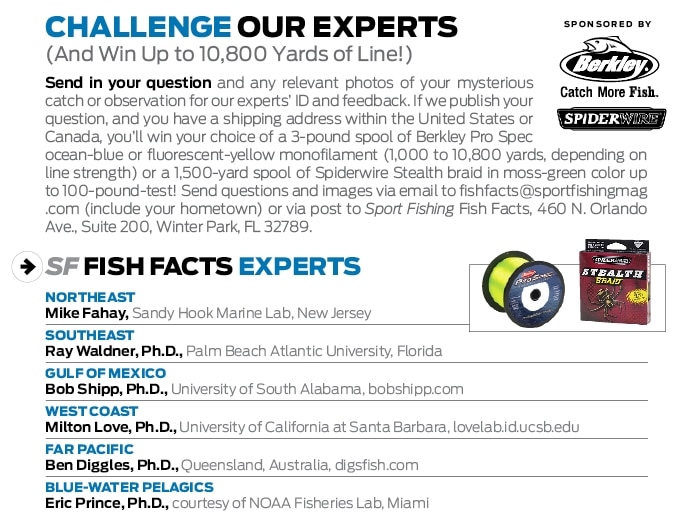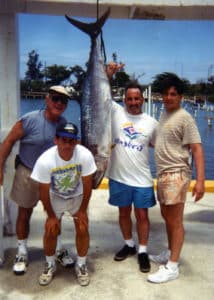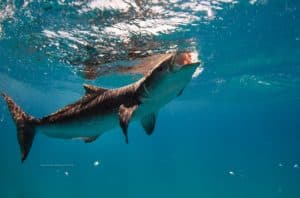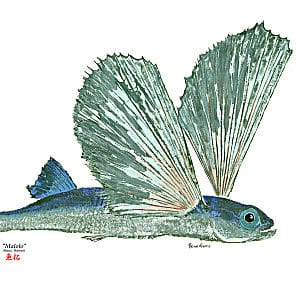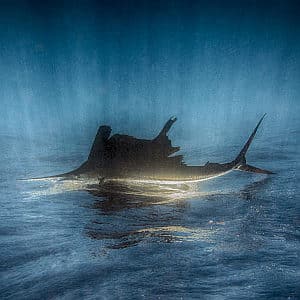In each issue of Sport Fishing magazine, a panel of five international expert ichthyologists identifies unusual and often amazing fishes in photos submitted by readers. Below you’ll find the I.D. and information for a few interesting catches from far and wide.
FEELING JAGGED
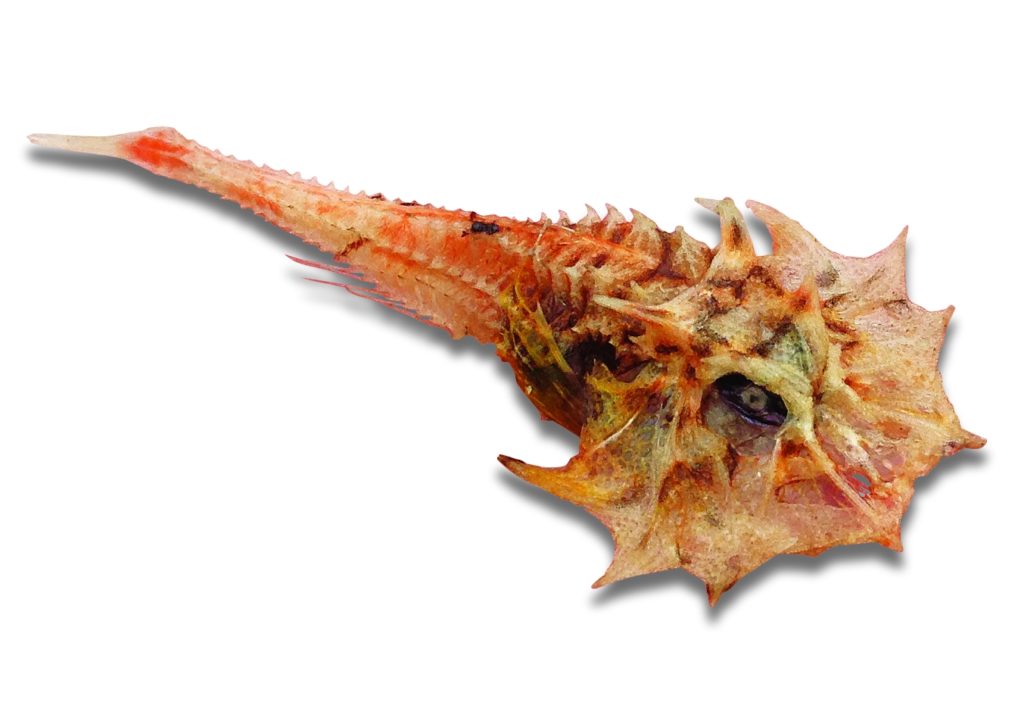
ANSWER: This is one interesting little fish. I conferred with experts Bruce Mundy from NOAA and Jeff Johnson from the Queensland Museum in Australia, and we agree that it’s definitely a type of armored searobin, also known as an armored gurnard (family Triglidae). Armored gurnards are common deepwater species that normally live on or near the bottom, and are encountered in deep trawls at depths of 600 to 1,600 feet on the edge of the continental shelf and its slopes. However, gurnard larvae and small juveniles are found in the vertically migrating plankton zone (which can extend to as shallow as 300 feet in the water column at night); that’s probably where the yellowfin tuna encountered this one, while foraging.
It’s likely a juvenile jaggedhead gurnard (Gargariscus prionocephalus), so named because of the distinctive jagged appearance of the sharp spines around the front of the head. From this specimen, it appears that these spines either became more rounded in the adult fish, which can grow to around 12 inches long, or possibly the surrounding soft tissue was digested in the yellowfin’s gut, leaving only the sharp skeleton. Jaggedhead gurnards have previously been recorded only from the western Pacific Ocean south of Japan to the Philippines and the Arafura Sea north of Australia. So if it is indeed G. prionocephalus, this probably represents a new record for the species in Hawaiian waters. — Ben Diggles
ENIGMATIC GROUPER
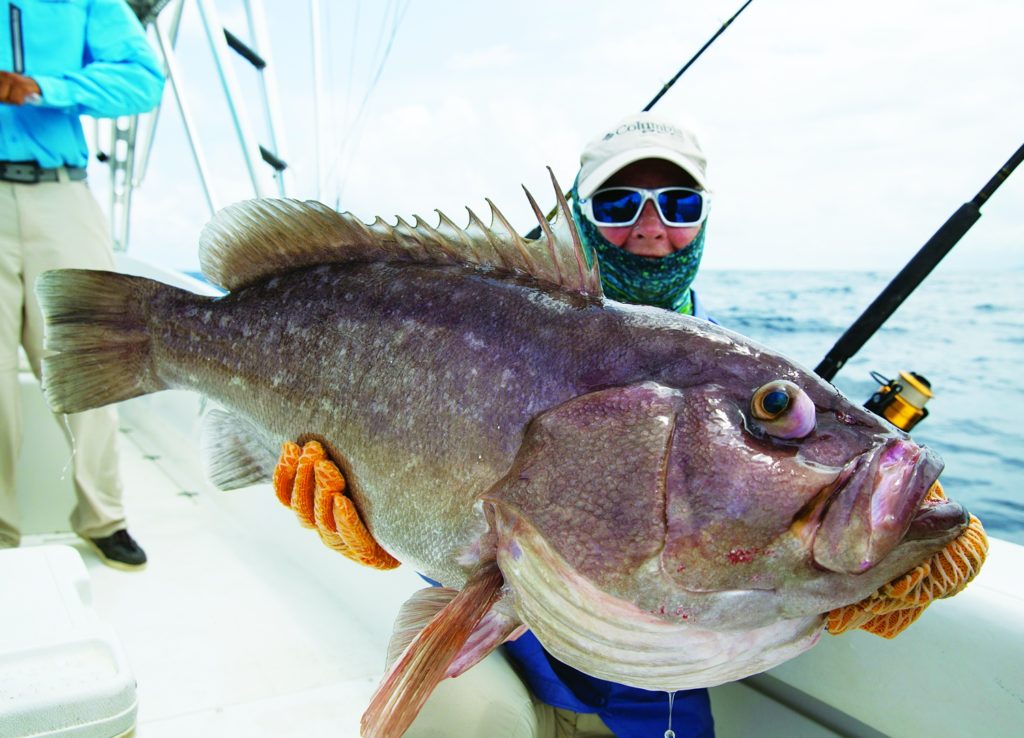
ANSWER: Well, Chris, you made quite a catch. It’s an adult tenspine grouper, Hyporthodus exsul. So little is known about this species that there appear to be no good photographs of the adults; I probably would have misidentified this fish as a star-studded grouper, Hyporthodus niphobles, a close relative. It’s a good thing I could turn to grouper experts Ross Robertson (Smithsonian Tropical Research Institute) and Matt Craig (NMFS Southwest Fisheries Science Center) for help. Here’s their final determination.
Three characteristics in combination tell the tale: 1) that dark “mustache” just behind the upper jaw, 2) a long second dorsal spine, and 3) that random scattering of white markings. Tenspines are found from the very southeastern corner of the Gulf of California to Panama, but because they may be confused with other groupers, it’s quite possible they range both farther north and south.
This is a reef species, reaching about 50 inches long, and ranging in depths from about 100 to perhaps 1,500 feet. Even if your catch wasn’t quite at the maximum, it’s a good fish and would likely have become the IGFA all-tackle record, had it been entered, since at the time of this writing, no record exists for the species. — Milton Love
WHEN THE SLEEPER WAKES
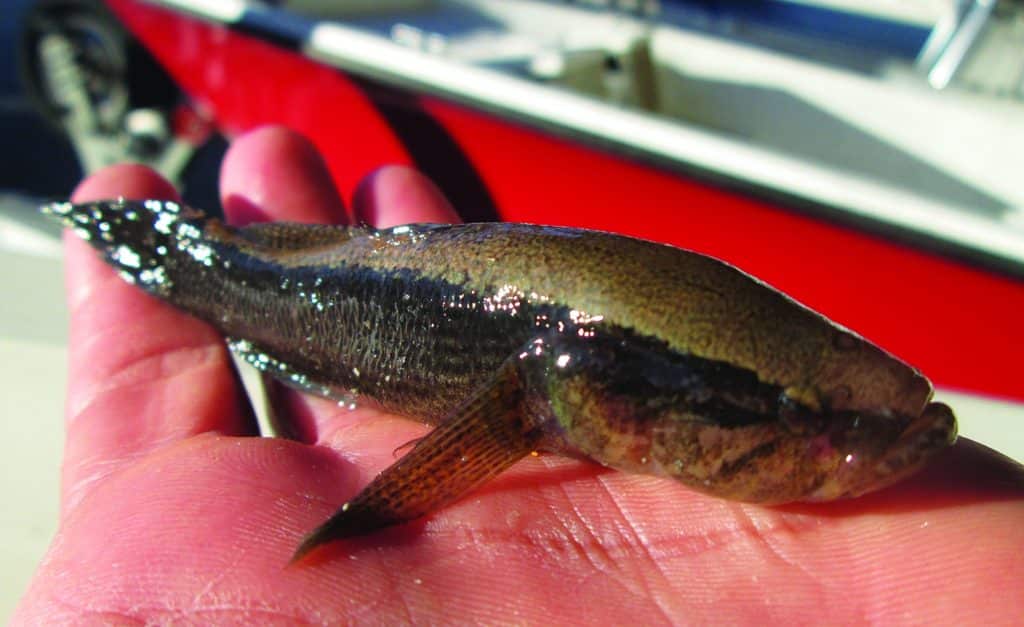
ANSWER: Sonny, what you found in your livewell was a spinycheek sleeper, Eleotris pisonis. And you’re right — this is one tough guy. The sleepers are small estuarine fishes, sometimes moving into fresh water. Most common in the group is the fat sleeper, Dormitator maculatus. It tops off at about 8 inches, as does your spinycheek.
Most of the sleepers are fairly wide-ranging, found throughout the Gulf, the Caribbean islands and south to Brazil. We rarely see them because they are usually nestled in some sort of debris that renders them nearly invisible. Fisheries scientists consider them closely related to the gobies, but unlike gobies, sleepers’ pelvic fins aren’t fused into a sucking disc.
The sleepers get their name from their habit of remaining nearly motionless for hours on end. But when frightened, they can dart off at remarkable speed. As bait, yes, they can serve well, because that tough nature of theirs translates to many hours on a hook before they expire. — Bob Shipp
ISOPOD GOT YOUR TONGUE?
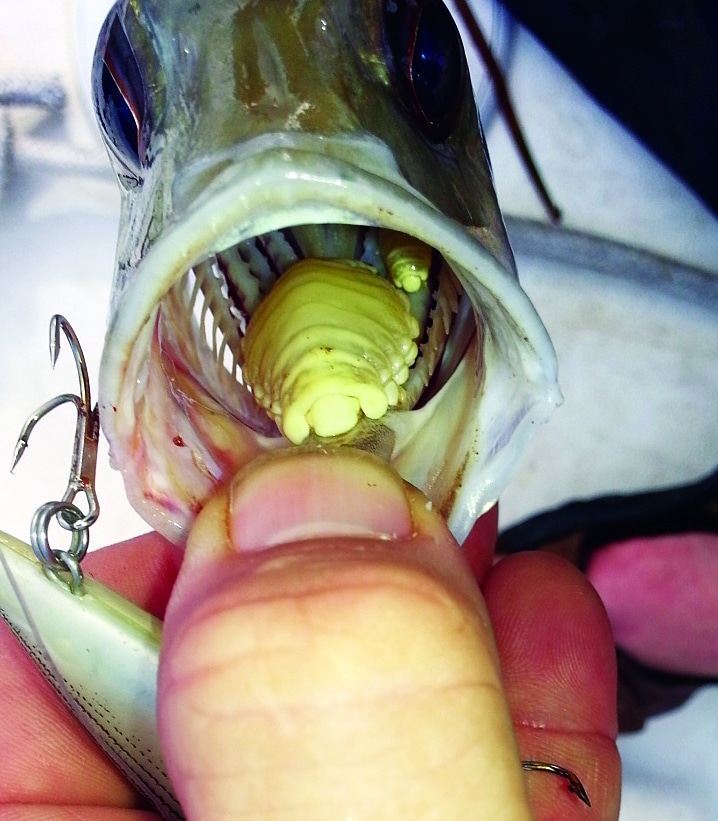
ANSWER: Although I can’t see the characteristics normally required to identify cymothoid isopods, the host and catch location suggest that the parasites are Cymothoa oestrum. Like other cymothoids, these isopods usually infest fishes while the parasites are juveniles. They then metamorphose into males, like the smaller individual in the jack’s mouth, and eventually develop into females, represented by the larger individual. Cymothoid isopods are common parasites of reef-associated fishes in the tropical western Atlantic region, and are usually found either hanging on the heads of their hosts or in the fish’s mouths.
A closely related isopod, C. exigua, cuts off the blood supply to its host’s tongue, causing the tongue to atrophy. The isopod then takes the place of the tongue — the only known case of a parasite replacing a body part of its host with its own body. — Ray Waldner
BRINGING HOME THE BUTTERFISH
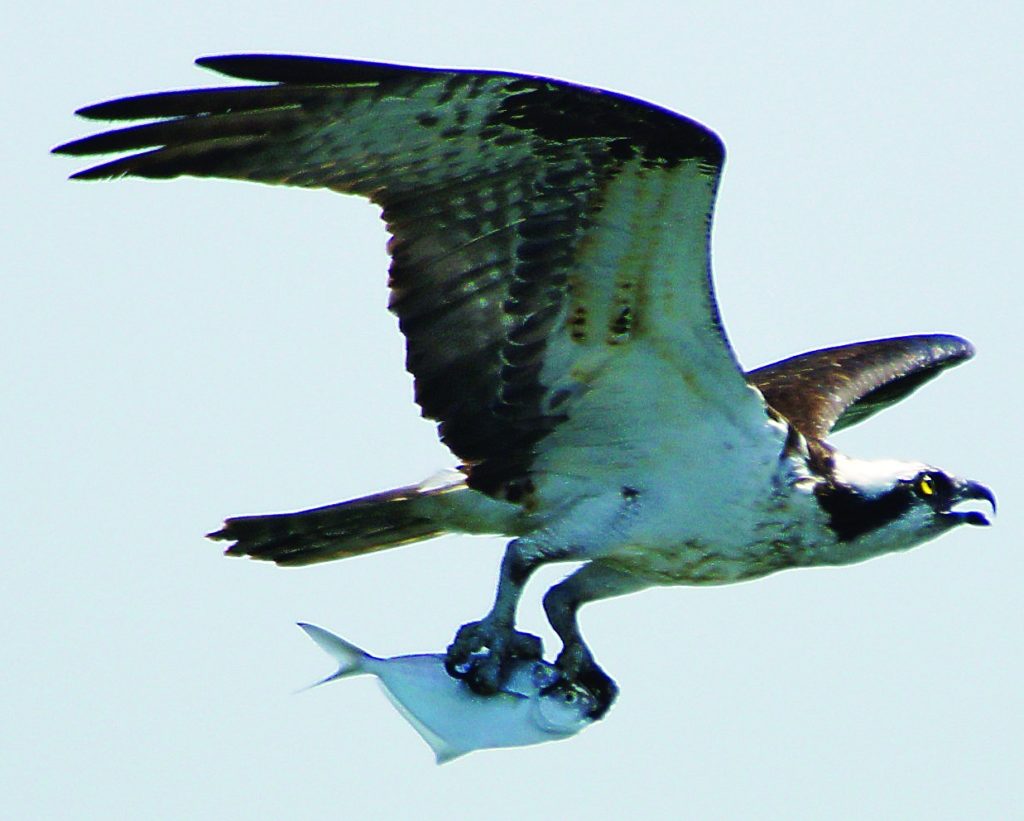
ANSWER: Your photo shows an osprey carrying a butterfish, Peprilus triacanthus, a relatively common fish off the Atlantic coast of North America, from as far north and east as Newfoundland and — in deep water — as far south as Florida. Superficially, it looks like a jack, but is immediately identifiable by the lack of pelvic fins and very blunt snout.
There is a small commercial fishery for the excellent-eating butterfish, based on an underexploited stock. The 17 other species in this family (Stromateidae) are highly oceanic and only rarely occur in coastal waters. An exception is the harvest fish, Peprilus paru, which occurs in coastal waters off the southern United States.
I take a lot of bird photos myself, and never miss the opportunity to photograph an osprey carrying fish prey. The challenge is to identify the fish, which will tell you something about the habitat(s) where the osprey has been hunting. Ospreys aren’t capable of going very deep to snag their prey — perhaps only as deep as the length of their legs. Even so, they’re often seen carrying winter flounder, at least off New Jersey. The flounder either swim into water only inches deep or make occasional sojourns near the surface.
Butterfish do occur near the surface, at least during summer, when small groups can be found in bays and estuaries throughout their range. In winter and spring, however, they occur near bottom on the continental shelf, as deep as 600 feet, well out of reach of ospreys. — Mike Fahay
FROM THE FISH FACTS ARCHIVES
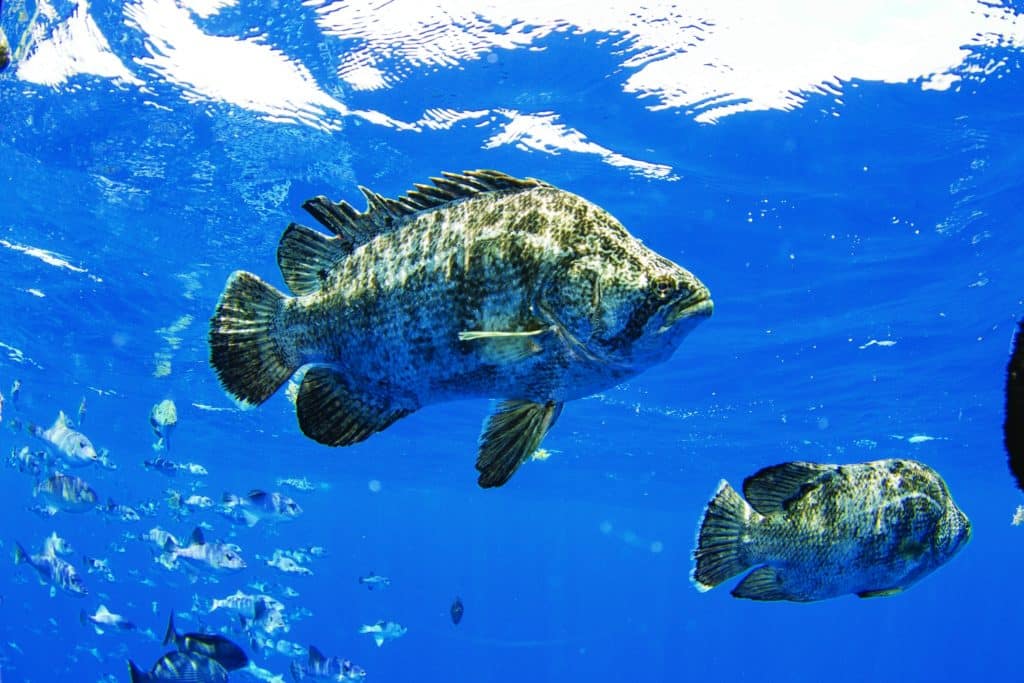
Drifters of the world’s warm oceans, tripletail are known for appearing to float on their sides near the surface, while in fact waiting to make a lightning strike on unsuspecting prey — or an angler’s bait. They fight hard, jump often and eat good, so logically they’re much appreciated. The IGFA all-tackle record weighed 42 pounds, 5 ounces, caught on a mullet off South Africa in 1989.
